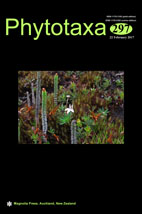Abstract
The Botryosphaeriales is a cosmopolitan fungal order and genera belonging to it are common opportunistic pathogens which mostly infect woody plants. They cause fruit rot, dieback, trunk rot, canker and similar diseases killing trees of natural forests, plantations and fruit trees. Relatively recently, some new families (including family Aplosporellaceae) had been established within this order delineating from family Botryosphaeriaceae. In the present study, two strains (MMI00067 and MMI00068) were isolated from soil attached to the base of a macrofungal stipe collected from the forest of Anuppur (Amarkantak), Madhya Pradesh, India. Strains were identified by DNA sequence data of four loci viz., internal transcribed spacer (ITS) of rDNA, large subunit rDNA (LSU), translation elongation factor (tef) and partial β-tubulin (βtub). Based on the phylogenetic analysis, a new fungal genus Alanomyces is proposed and is positioned within Aplosporellaceae along with Aplosporella. It is characterized by fast growing, dark greenish-black colony, long neck-like multilocular-papillate, black pycnidia with separate ostiole and small <10 µm in length, cylindrical, hyaline, guttulate spermatia. The genus Alanomyces is phylogenetically distinct from its close relative Aplosporella and proposed herein as a new monotypic genus with A. indica as type species.

